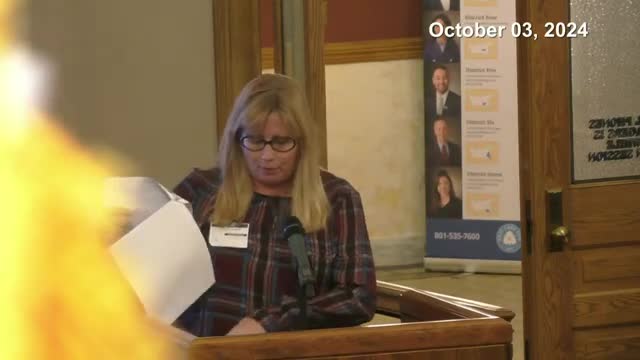Residents Rally Against New Apartment Project Over Parking Crisis
October 04, 2024 | Salt Lake City Council and RDA Board meetings, Salt Lake City, Salt Lake County, Utah
This article was created by AI summarizing key points discussed. AI makes mistakes, so for full details and context, please refer to the video of the full meeting. Please report any errors so we can fix them. Report an error »

Residents of a historic neighborhood in Salt Lake City voiced strong concerns during a recent government meeting regarding a proposed development that would convert a church into four townhomes. The discussions highlighted significant issues surrounding parking and traffic congestion, which have escalated since the church was transformed into a 16-unit apartment building.
Community members, including homeowners and representatives from local homeowners associations, expressed frustration over the lack of adequate parking in the area. One resident noted that tenants from the newly converted apartments often park in their driveways, creating safety hazards and limiting access for emergency services. Another speaker emphasized that the existing parking situation has deteriorated, making it difficult for residents to navigate their own streets safely.
The property in question is owned by JAB, the same entity that developed the church into apartments without providing parking. Critics argue that the new project will exacerbate the already strained parking situation, as the proposed townhomes will not sufficiently accommodate the anticipated influx of vehicles. Residents fear that the approval of this project will further diminish the livability of their neighborhood, which has already been impacted by increased traffic and congestion.
During the meeting, members of the Historic Landmark Commission acknowledged the parking concerns but clarified that addressing parking issues falls outside their jurisdiction. They expressed sympathy for the residents' plight, noting that while the project meets city zoning requirements, the broader implications for neighborhood livability must be considered.
As the commission deliberates, community members are urging city officials to reassess parking policies and consider the cumulative impact of multiple developments on local infrastructure. The meeting concluded with a call for more comprehensive solutions to the parking challenges facing the neighborhood, emphasizing the need for a balance between development and maintaining a livable community.
Community members, including homeowners and representatives from local homeowners associations, expressed frustration over the lack of adequate parking in the area. One resident noted that tenants from the newly converted apartments often park in their driveways, creating safety hazards and limiting access for emergency services. Another speaker emphasized that the existing parking situation has deteriorated, making it difficult for residents to navigate their own streets safely.
The property in question is owned by JAB, the same entity that developed the church into apartments without providing parking. Critics argue that the new project will exacerbate the already strained parking situation, as the proposed townhomes will not sufficiently accommodate the anticipated influx of vehicles. Residents fear that the approval of this project will further diminish the livability of their neighborhood, which has already been impacted by increased traffic and congestion.
During the meeting, members of the Historic Landmark Commission acknowledged the parking concerns but clarified that addressing parking issues falls outside their jurisdiction. They expressed sympathy for the residents' plight, noting that while the project meets city zoning requirements, the broader implications for neighborhood livability must be considered.
As the commission deliberates, community members are urging city officials to reassess parking policies and consider the cumulative impact of multiple developments on local infrastructure. The meeting concluded with a call for more comprehensive solutions to the parking challenges facing the neighborhood, emphasizing the need for a balance between development and maintaining a livable community.
View full meeting
This article is based on a recent meeting—watch the full video and explore the complete transcript for deeper insights into the discussion.
View full meeting

